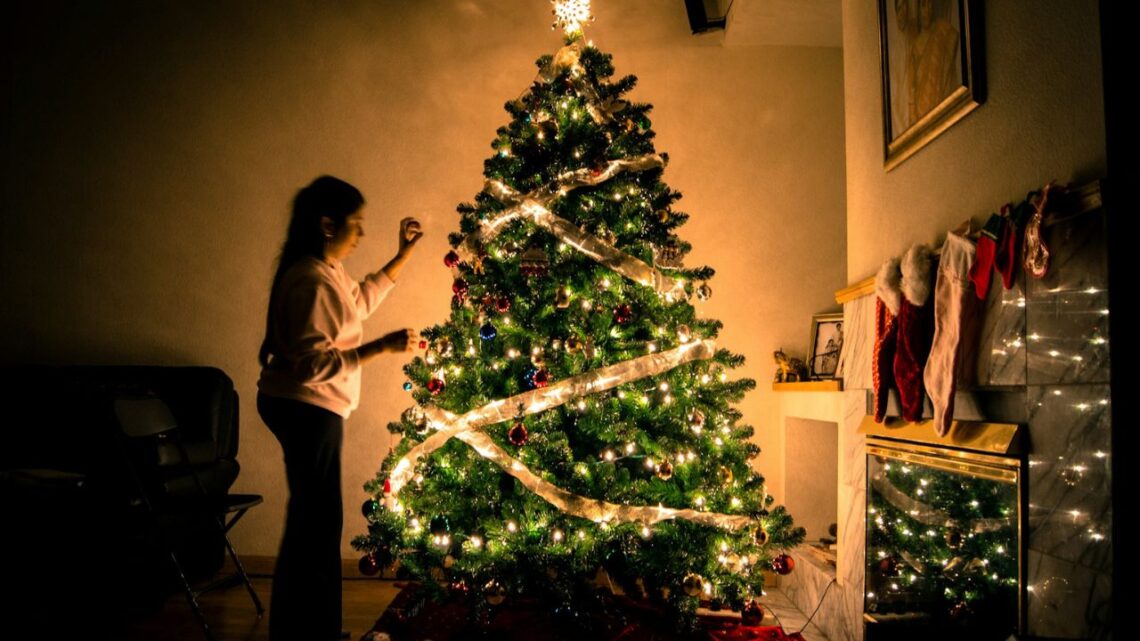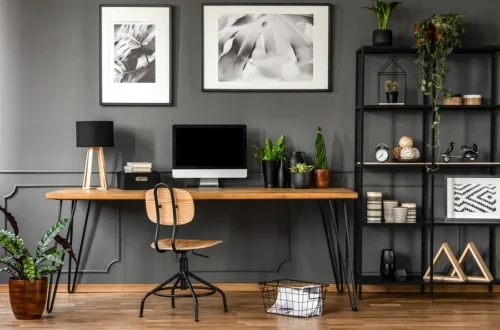The air is buzzing, a certain magical energy is creeping into the long summer days, and you can practically hear the faint, happy jingle of sleigh bells—even if it’s a scorching 30 degrees outside! That’s the feeling of festive happiness and excitement as the Christmas season rolls around, and at the heart of all that excitement is the magnificent Christmas tree.
Decorating the tree is more than just hanging baubles; it’s an annual ritual, a creative project, and a family memory-making machine. Whether you’re a newbie with tinsel-fears or a seasoned decorator looking for pro-tips, this guide has everything you need to create a stunning, sparkle-filled centrepiece for your home.
Christmas is Here in The Aussie Vibe
Christmas in Australia is a unique blend of global tradition and local, sunny culture. Unlike the Northern Hemisphere’s ‘White Christmas’ with snow and cosy fireplaces, Christmas in Aussie culture is all about summer holidays, beach cricket, barbecues, and seafood lunches. The traditional symbols of winter—like Santa in a fur-lined suit or the evergreen tree—are adopted, but given a distinctly Australian twist. You might see Santa on a surfboard, or even a native Christmas plant being used as decoration!
Despite the heat, the Christmas tree remains a central and highly important symbol. It’s the visual anchor of the holiday, the spot where gifts magically appear on Christmas morning, and a shining beacon of the festive season. It brings a touch of magic, history, and tradition right into the heart of the Aussie summer.
Also Read: How to become an Interior Decorator? Is it Different from Designer?
What Species of Tree is a Christmas Tree?
Traditionally, the classic Christmas tree used globally is an evergreen conifer, which is a type of cone-bearing tree that stays green all year round. The most popular species include:
- Fir Trees: Like the Fraser Fir, Douglas Fir, or Balsam Fir. These are famous for their lovely scent, strong branches for holding ornaments, and good needle retention.
- Pine Trees: Such as the Scots Pine or White Pine.
- Spruce Trees: Like the Norway Spruce.
In Australia, while these imported varieties are common (often grown on Christmas tree farms), you might also find native alternatives like the Norfolk Island Pine (Araucaria heterophylla) being used, or the stunning bright orange-flowered Western Australian Christmas Tree (Nuytsia floribunda).
What Does the Christmas Tree Signify?
The Christmas tree is a symbol with ancient roots that pre-date Christianity. Its significance is powerful:
- Everlasting Life: Because the evergreen tree stays green even in the depths of winter (or the heat of summer!), it became a symbol of continual life, hope, and light during the darkest, or hottest, part of the year.
- The Promised Return of Spring/Summer: For ancient cultures, bringing evergreen branches inside for the winter solstice (the shortest day of the year) was a way to look forward to the return of sun and life.
- Christian Symbolism: Historically, some Christians linked the triangular shape of the fir tree to the Holy Trinity (Father, Son, and Holy Spirit). The ornaments and lights added over time have their own meanings:
- Lights: Represent Christ as the light of the world.
- Star Topper: Symbolises the Star of Bethlehem that guided the Wise Men.
- Round Ornaments: Originally represented the fruits of the Garden of Eden.
In modern times, the tree signifies family, togetherness, joy, and the spirit of generosity. It’s a beautiful mix of history and personal tradition.
Where Can I Buy Real Christmas Trees Near Me?
If you decide you want the authentic pine scent of a real tree, you have a few options:
- Local Christmas Tree Farms: This is often the best place, as you can go and choose your tree while it’s still growing! Many will cut it down for you right on the spot, ensuring maximum freshness.
- Pop-up Tree Vendors: Look for stalls that appear in local school grounds, garden centres, or vacant lots in early December.
- Local Nurseries/Garden Centres: These often stock potted trees or fresh-cut ones.
Pro Tip: A simple Google search for “real Christmas trees near me” or “Christmas tree farms Sydney/Melbourne” (insert your city) is the quickest way to find a supplier nearby.
Best Time to Decorate a Christmas Tree
There’s no strict rule, but most people aim for the first weekend of December (the first weekend after the 1st of December).
- The Traditional Date: Some people follow the tradition of setting up the tree on the first day of Advent, which is the fourth Sunday before Christmas.
- The Practical Date: For a fresh, real tree, it’s best to put it up about three to four weeks before Christmas Day to ensure it stays fresh and vibrant throughout the holidays. Putting it up too early means it might dry out or start dropping needles before the 25th.
- The Excited Date: If you have an artificial tree, you can put it up anytime you feel the Christmas spirit—sometimes as early as November!
Step-by-Step Decoration Guide
Ready to get creative? Follow this order to decorate your tree like a pro and avoid that tangled, messy look!
Step 1: Fluff and Stabilise (The Prep Work)
The first step towards decorating your Christmas tree starts with cutting.
Real Tree: Cut about 2-3 cm off the bottom of the trunk (called “re-cutting the butt”) so the tree can easily soak up water. Put it in a sturdy stand with a large water reservoir and fill it up immediately.
Artificial Tree: Unpack the sections and assemble them. Now for the secret to a great artificial tree: Fluffing. Take the time to individually spread and shape every single tip on every branch. Bend them slightly upwards and outwards to fill in any gaps and make the tree look full and realistic.
Step 2: How to Put Lights on a Tree?
Lights are the foundation of your tree’s glow. A simple string wrapped around the outside won’t cut it for a professional look.
Figure out how many lights you need. A rough rule of thumb is about 100-150 mini lights per foot (30cm) of tree height. So, a 6-foot (1.8m) tree would need 600-900 lights!
Start at the bottom and work your way up. If using a single strand, keep the plug-end near the base by the power source.
Weave In and Out (The Pro Technique): Don’t just wrap the lights around the outside of the branches. Start at the trunk and weave the string out to the tip of a branch, then back in towards the trunk, and then move up to the next branch/section. This ensures lights are placed deep inside the tree as well as on the tips, giving your tree a brilliant three-dimensional glow and depth.
Keep them on: Keep the lights plugged in and lit as you work. This lets you immediately spot dark patches or uneven distribution.
Step 3: Garland or Ribbon (The Filler and Flow)
Ribbons, beaded strands, or tinsel add flow, texture, and fill space.
- Ribbon: Use wired ribbon (it holds its shape better). Cut pieces into lengths (about 30-50cm).
- Tuck one end of a ribbon piece deep into the tree, let it loop out over a few branches, and then tuck the other end back into the tree. This creates a natural, flowing look that zig-zags down the tree.
- Garlands: Start at the top and let the garland drape naturally, looping between the branches rather than tightly wrapping.
Step 4: Ornaments (The Personality)
This is where your tree’s personality truly shines!
- Start with Large, “Filler” Ornaments: Place your biggest, simplest baubles deeper inside the tree, near the trunk. This adds depth and colour to the interior, making the tree look full.
- Add “Statement” Ornaments: These are your favourite, medium-to-large, or special ornaments. Space these out evenly across the tree, positioning them near the middle of the branches.
- Finish with Small Ornaments and Heirloom Pieces: Place your smaller, detailed, or most sentimental ornaments on the tips of the branches, where they catch the most light.
- The “Rule of Three”: Try to arrange ornaments in clusters of three, or in a triangle shape, to create a visually pleasing pattern.
Step 5: The Finishing Touches
- Tree Topper: Place your star, angel, or unique topper proudly at the very top.
- Tree Skirt/Base: Wrap a tree skirt around the base to hide the stand and create a nice, soft backdrop for the presents. You can also use a basket or even a large piece of fabric.
Also Read: How to Scrub Off Moss From Your Patio Bricks & Keep it non-slippery.
Tree Maintenance and Pack-Up
How Long Can a Real Christmas Tree Live at Home?
With proper care, a fresh-cut real Christmas tree can last four to six weeks indoors.
To keep it fresh:
- Water, Water, Water: The stand’s reservoir should never be empty. A fresh tree can drink several litres of water a day, especially in the first week.
- Keep it Cool: Place the tree away from direct sunlight, heating vents, or the air conditioner. Heat will dry it out quickly.
- The Freshness Test: If the needles feel soft and flexible, the tree is fine. If they feel dry and brittle, and drop off when you lightly shake the branch, it’s time to take it down.
When to Take Down a Christmas Tree?
You get to decide, but there are a few traditional suggestions:
- The Traditional Date: The most common traditional date is January 5th or 6th. January 6th is known as the Feast of the Epiphany (or Twelfth Night), marking the day the Three Wise Men are believed to have arrived to see Jesus. According to old folklore, taking down decorations before this date is bad luck!
- The Aussie Practical Date: Many people in Australia prefer to pack up before they go back to work or before the kids go back to school, often around New Year’s Eve or New Year’s Day.
The most important thing is to take it down when it becomes a fire hazard (if it’s a real, dried-out tree) or when you feel the festive season has officially wrapped up for your family! Enjoy the sparkling magic while it lasts!






